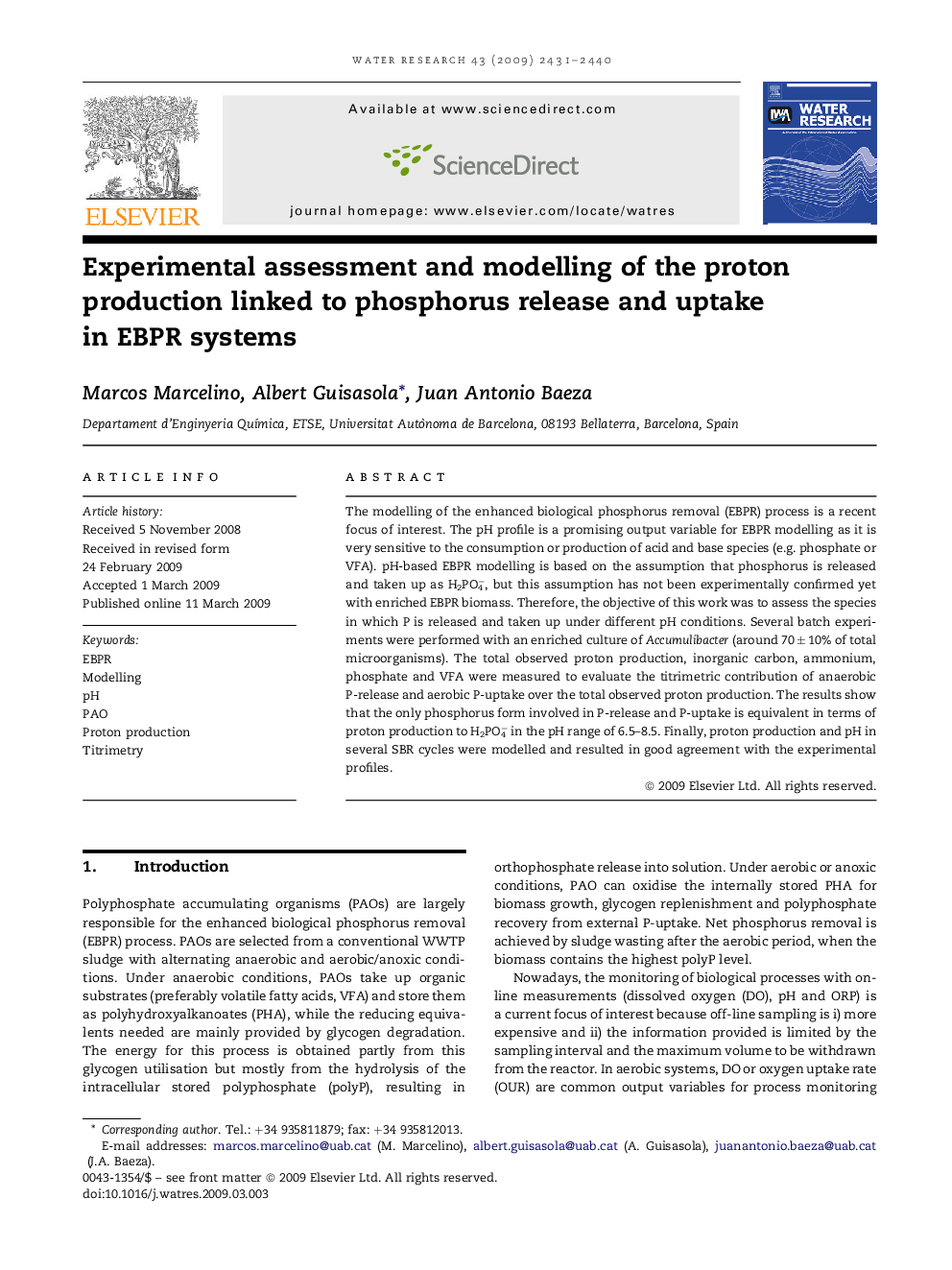| کد مقاله | کد نشریه | سال انتشار | مقاله انگلیسی | نسخه تمام متن |
|---|---|---|---|---|
| 4484863 | 1316934 | 2009 | 10 صفحه PDF | دانلود رایگان |

The modelling of the enhanced biological phosphorus removal (EBPR) process is a recent focus of interest. The pH profile is a promising output variable for EBPR modelling as it is very sensitive to the consumption or production of acid and base species (e.g. phosphate or VFA). pH-based EBPR modelling is based on the assumption that phosphorus is released and taken up as H2PO4−, but this assumption has not been experimentally confirmed yet with enriched EBPR biomass. Therefore, the objective of this work was to assess the species in which P is released and taken up under different pH conditions. Several batch experiments were performed with an enriched culture of Accumulibacter (around 70 ± 10% of total microorganisms). The total observed proton production, inorganic carbon, ammonium, phosphate and VFA were measured to evaluate the titrimetric contribution of anaerobic P-release and aerobic P-uptake over the total observed proton production. The results show that the only phosphorus form involved in P-release and P-uptake is equivalent in terms of proton production to H2PO4− in the pH range of 6.5–8.5. Finally, proton production and pH in several SBR cycles were modelled and resulted in good agreement with the experimental profiles.
Journal: Water Research - Volume 43, Issue 9, May 2009, Pages 2431–2440